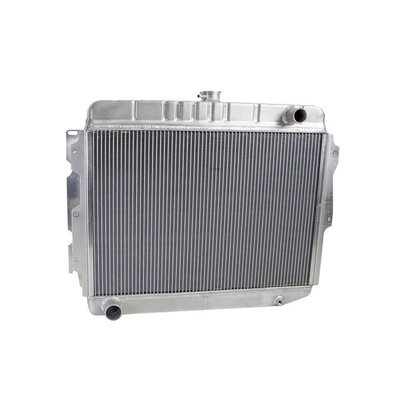vance.dykes
Well-Known Member
REMEMBER THAT 2 THINGS ARE NEEDED TO COOL THE ENGINE IT IS THRU HEAT TRANSFER this is done by 1. the coolant and 2. air flow. the coolant absorbs heat from the engine then the radiator i.e heat transfer unit removes the heat via air flow. OK after 2 to 3 months of reading on the form seeing what all of you have done and then with my 40 years as a master ASE technician looking at how a new car radiator and cooling system works I have designed this for my cooling system if you look at the radiators radiator one is a summit three row that I used when I raced. look at the fins and the tubes and how they contact and inside ribbing within the fins with this it cooled my car very well for a racing application it fit a 22 inch hole perfectly and I use a single 16 inch fan to keep the car in temp even in round robin not much more than 210 with a 10 minute cool down to 175. Radiator three is from one of my fleet vehicles which is an F 250 with a 6.2 V-8 these are three-quarter inch tube two row radiator and my guys try and blow these up every day but the cooling systems never have a problem. radiator number two is a champion cooling system and if you look at the fins here you can see they look similar to the other two now these are a two row 1 inch tube .

rad-1

rad-2
 rad-3 f-250
rad-3 f-250
rad-1
rad-2

















